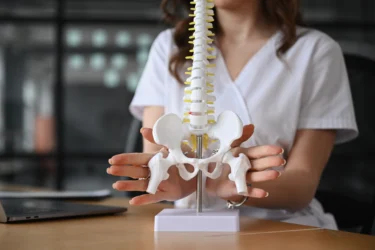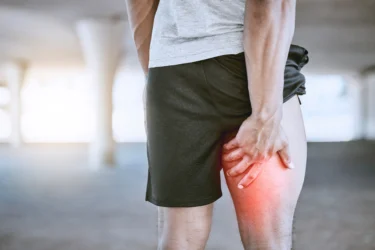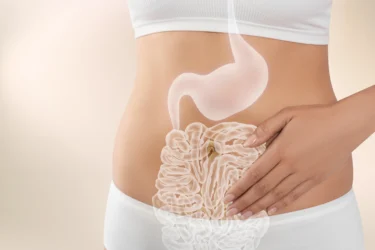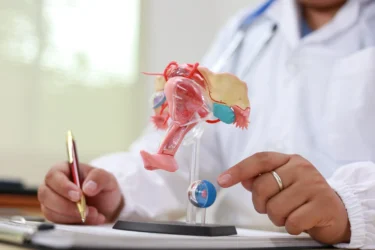Benefits of Uttanasana (Standing Forward Bend Pose) and How to Do it By Dr. Himani Bisht
By Dr. Himani Bisht +2 more

Get,

to manage your symptom
Get your,


4 Cr+ families
benefitted

OTP sent to 9988776655



You’ve successfully subscribed to receive
doctor-approved tips on
Whatsapp

Get ready to feel your best.

Hi There,
Download the PharmEasy App now!!


Register to Avail the Offer
Send OTPBy continuing, you agree with our Privacy Policy and Terms and Conditions

Hi There,
Sign up on PharmEasy now!!
Trusted by 4 crore+ families

OTP sent to 9988776655



You have unlocked 25% off on medicines




Code: NU25

Comments


Leave your comment here
By Dr. Himani Bisht +2 more
Table of Contents
We are very keen on physical exercise and all age groups are very much interested in doing physical exercise to have a healthy life and increase their life expectancy. You have to agree that when a person is doing exercises throughout all stages of life tends to have a healthier, happier, and longer life. You all are familiar with yoga and ancient times around 500 BC to 800 AD is a prominent period for yoga. Yoga is a science of living which focuses on spiritual discipline which brings harmony between body and mind. Yoga consists of several asanas, including adopting various body positions that bring stability to the body and mind. Yoga creates awareness of one’s structural existence1. In this blog, we bring one such asana Uttanasana, that you may add to your daily exercise to stay active and healthy.

Uttanasana is an easy, standing yoga pose2.
In Sanskrit, ‘Ut’ means intense, ‘tan’ means stretch or extend, and ‘asana’ means pose or posture. Uttanasana yoga is a pose that intensely stretches the entire back of the body, including the spine, hips, and hamstrings. Hence, Uttanasana is also called the Standing forward bend pose3.
Uttanasana pose consists of standing with feet together, bending the upper body at the hips and allowing the head to hang downwards. The body is supported by both palms keeping them on the floor beside the feet3.
Did You Know?
You may practice Tadasana (mountain pose) as a preparatory pose to perform Uttanasana posture4. The following steps will guide you to do Uttanasana:
Uttanasana may offer many health benefits if performed correctly by engaging the targeted muscles. Some of the potential benefits of Uttanasana posture are described as follows:

If you are a person who sits in the office for longer durations and are affected by the harmful effects of a sedentary lifestyle. You must try Uttanasana to keep your spine younger which provides an intense stretch and gives a great extension to the back. Hence, it might help to lengthen your spine and make it more flexible. Standing forward bend pose may also release the tightness in the lower back strengthening the muscles that run along the spine2,4. If you have spine issues, consult a proper trainer and doctor. Do not self-medicate or treat.

Uttanasana posture might benefit you if you struggle with tight hamstrings problems. It is a good posture for stretching the hamstrings of the back of the legs. Tight hamstrings may be a reason for lower back problems that might lower daily activities. The Standing forward bend pose allows you to invert the torso by putting your head below the heart. It provides a high level of intensive stretch to the tight hamstring, allowing them to loosen up5.

If your day starts with an uneasy feeling due to improper digestion, you should practise Uttanasana yoga. The daily practice of Uttanasana posture folds the body in the forward direction. This may help the digestive organs get a gentle massage, boost metabolism, and stimulate the digestive system. Uttanasana pose allows twisting of the body, which may benefit the abdominal organs facilitating the working of the digestive tract and may help in relieving digestive ailments such as constipation4.

Practising yoga may establish a connection between the mind and body; however, it is not an alternative to modern medicine. Therefore, you must not depend on yoga to treat your health condition. Instead, you must consult a qualified physician who will assess your condition and diagnose it accordingly. Furthermore, it is essential to practice and learn yoga under the supervision of a trained yoga expert to avoid injuries.
In my experience, I have found that individuals with osteoporosis need to exercise caution and take a gradual approach when performing Uttanasana. Osteoporosis weakens the bones and makes them more susceptible to fractures. Deep forward bending exercises like Uttanasana might put stress on the spine, increasing the risk of compression fractures1.
Dr. Siddharth Gupta, B.A.M.S, M.D (Ayu)
The following conditions need to be looked out for before doing the Uttanasana pose:
Based on my experience, I strongly advise against engaging in this practice if you have high myopia. High myopia refers to severe nearsightedness, which means your eyes have difficulty focusing on objects in the distance. Deep forward bending exercises can put strain on the eyes and worsen the condition, potentially leading to further vision problems or complications3.
Dr. Rajeev Singh, BAMS
With the guidance of a trained Yoga master, one can assess and analyse the risk factors and continue to practice Uttanasana with precautions.
Also Read: Benefits of Butterfly Pose (Baddha Konasana) and How to Do it By Dr. Himani Bisht
Uttanasana yoga is an easy, standing yoga pose. Uttanasana yoga is also referred to as the Standing forward bend pose. The Uttanasana posture folds the body forward, giving the back an intense stretch. It may help to lengthen the spine and loosen tight hamstrings and it may reduce digestive ailments such as constipation enhancing the digestive process. However, you must follow the instructions given by your yoga teacher to gain the maximum benefits and avoid physical injuries.
Uttanasana is a standing yoga pose ‘Ut’ means intense, ‘tan’ means stretch, and ‘asana’ means pose. Uttanasana yoga intensely stretches the entire back of the body, including the spine, hips, and hamstrings. Hence, it is also called the Standing forward bend pose3.
Some of the contraindications of Uttanasana posture include osteoporosis, back injuries, high blood pressure, low blood pressure, vertigo, hernia, ulcers, pregnancy, and abdominal inflammation2,4.
Uttanasana is an easy-standing pose and might be a suitable yoga pose for beginners. However, the level of difficulty and the technique to perform Uttanasana should be learned from a trained yoga teacher2.
Uttanasana may benefit the digestion process. Uttanasana posture is an inverted pose which folds the body in the forward direction helping the digestive organs to get a gentle massage. It may boost metabolism and stimulate the digestive system4.
You may perform Uttanasana yoga for 10-30 seconds. However, it should be practised under the guidance of an experienced Yoga teacher who will advise you on the number of rounds that Uttanasana may be practised4.
Disclaimer: The information provided here is for educational/awareness purposes only and is not intended to be a substitute for medical treatment by a healthcare professional and should not be relied upon to diagnose or treat any medical condition. The reader should consult a registered medical practitioner to determine the appropriateness of the information and before consuming any medication. PharmEasy does not provide any guarantee or warranty (express or implied) regarding the accuracy, adequacy, completeness, legality, reliability or usefulness of the information; and disclaims any liability arising thereof.
Links and product recommendations in the information provided here are advertisements of third-party products available on the website. PharmEasy does not make any representation on the accuracy or suitability of such products/services. Advertisements do not influence the editorial decisions or content. The information in this blog is subject to change without notice. The authors and administrators reserve the right to modify, add, or remove content without notification. It is your responsibility to review this disclaimer regularly for any changes.
Comments

Leave your comment...

View all comments(1)
You may also like
Thanks for sharing. I read many of your blog posts, cool, your blog is very good.